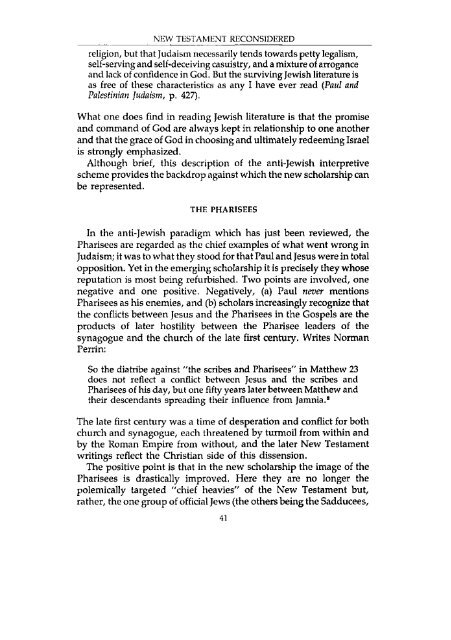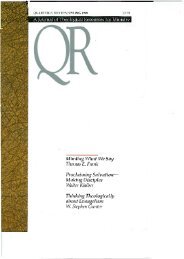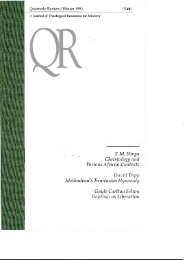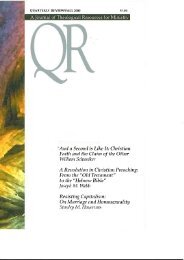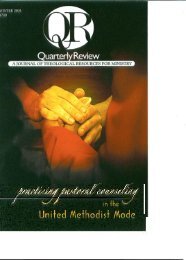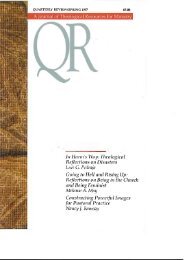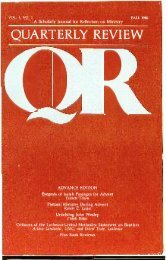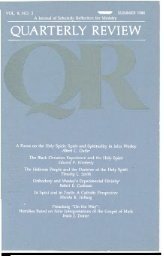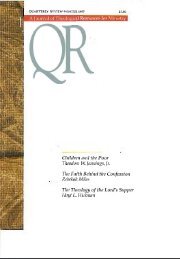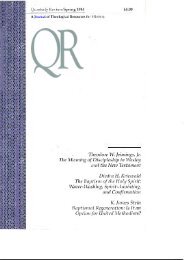Winter 1984 - 1985 - Quarterly Review
Winter 1984 - 1985 - Quarterly Review
Winter 1984 - 1985 - Quarterly Review
You also want an ePaper? Increase the reach of your titles
YUMPU automatically turns print PDFs into web optimized ePapers that Google loves.
NEW TESTAMENT RECONSIDERED<br />
religion, but that Judaism necessarily tends towards petty legalism,<br />
self-serving and self-deceiving casuistry, and a mixture of arrogance<br />
and lack of confidence in God. But the surviving Jewish literature is<br />
as free of these characteristics as any I have ever read (Paul and<br />
Palestinian Judaism, p. 427).<br />
What one does find in reading Jewish literature is that the promise<br />
and command of God are always kept in relationship to one another<br />
and that the grace of God in choosing and ultimately redeeming Israel<br />
is strongly emphasized.<br />
Although brief, this description of the anti-Jewish interpretive<br />
scheme provides the backdrop against which the new scholarship can<br />
be represented.<br />
THE PHARISEES<br />
In the anti-Jewish paradigm which has just been reviewed, the<br />
Pharisees are regarded as the chief examples of what went wrong in<br />
Judaism; it was to what they stood for that Paul and Jesus were in total<br />
opposition. Yet in the emerging scholarship it is precisely they whose<br />
reputation is most being refurbished. Two points are involved, one<br />
negative and one positive. Negatively, (a) Paul never mentions<br />
Pharisees as his enemies, and (b) scholars increasingly recognize that<br />
the conflicts between Jesus and the Pharisees in the Gospels are the<br />
products of later hostility between the Pharisee leaders of the<br />
synagogue and the church of the late first century. Writes Norman<br />
Perrin:<br />
So the diatribe against "the scribes and Pharisees" in Matthew 23<br />
does not reflect a conflict between Jesus and the scribes and<br />
Pharisees of his day, but one fifty years later between Matthew and<br />
their descendants spreading their influence from Jamnia. 8<br />
The late first century was a time of desperation and conflict for both<br />
church and synagogue, each threatened by turmoil from within and<br />
by the Roman Empire from without, and the later New Testament<br />
writings reflect the Christian side of this dissension.<br />
The positive point is that in the new scholarship the image of the<br />
Pharisees is drastically improved. Here they are no longer the<br />
polemically targeted "chief heavies" of the New Testament but,<br />
rather, the one group of official Jews (the others being the Sadducees,<br />
41


